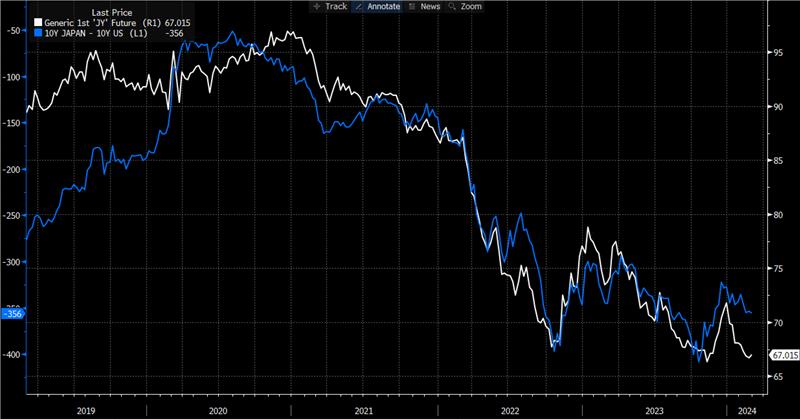Regularly in these columns, we mention the relationship between a currency's performance and its country's monetary policy. More precisely, monetary policy expectations influence forex. Traditionally, forex traders like to do carry trades. It's intellectually reassuring, and year after year, your money works while you sleep. It's as close as any investor can get to happiness! Of course, it's not all that simple in real life, and there are many factors that can explain opposing movements. This is true of the Turkish lira, for example, but that's another subject to which we'll return shortly.
For years, the yen has been underperforming, propelling Japan's flagship stock market index, the Nikkei 225, to new all-time highs. It took 34 years to observe this phenomenon, almost the aphelion of Halley's comet (okay, we're talking astronomical units here, not years).

Source : Bloomberg
The yen is suffering terribly from the yield differential with the United States. The best way to illustrate this is to look at the graph above, which traces the evolution of the Japanese currency (in blue) and the spread between the Japanese and US 10-year yields (in white). The similarity of the curves is almost perfect, at least since the beginning of 2021. If you want to anticipate a turnaround in the JPY, you need to be able to predict the spread. In the meantime, you can always keep an eye on resistance at 151.90 on the USDJPY to try a few short positions.

 By
By 












